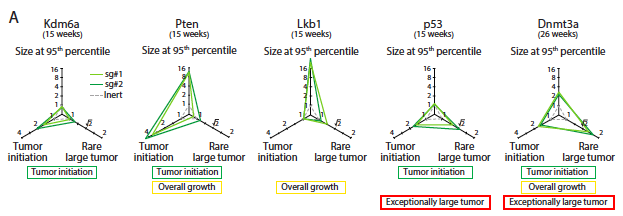There are two types of genes that, if mutated, can lead to cancer. One set of genes directs cell growth – a mutation in one of these genes can cause cells to grow uncontrollably, like a gas pedal stuck to the car floor. The other set of genes function as the “brakes,” telling cells when to slow down, correct replication mistakes, or undergo apoptosis (programmed cell death). These are called tumor suppressor genes, and as the name implies, a disruption in their function can allow the growth of tumors.

Decades of cancer research have identified many tumor suppressor genes, but the role of each gene in the complex process of tumorigenesis remains far from clear. This is where Damon Runyon Fellow Chuan Li, PhD, Damon Runyon alumnus Monte Winslow, PhD, and colleagues at Stanford are directing their efforts, building what they call a "functional taxonomy" of the tumor suppressor genes involved in lung cancer.
Using an approach called Tuba-seq, which enables precise measurement of tumor size in vivo, the team systematically inactivated 48 tumor suppressor genes in mice and recorded the impact of each one on tumor growth. What they found presents a more complicated picture of tumor suppression than the “faulty brakes” analogy would suggest.
“Instead of quantifying tumor suppressor genes in a binary fashion – is or is not a tumor suppressor – our method provides more granularity,” Dr. Li explained in an email. “We can now group them into genes that promote tumor initiation, tumor progression, and the emergence of extremely large tumors.” The team also uncovered genes that had not previously been characterized as tumor suppressors, a finding that could lead to the discovery of new pathways for targeted therapies. (The role of another such gene, AMBRA1, is explored in a recent publication co-authored by Dr. Li, Dr. Winslow, and Damon Runyon alumnus Julien Sage, PhD.)
In light of Dr. Li and Dr. Winslow’s work, we may consider the gear shift a more apt comparison for the tumor suppressor gene, given its multi-faceted role in decelerating the “car” of cell growth. Or maybe the vehicle analogies are better left behind – further research will tell.







